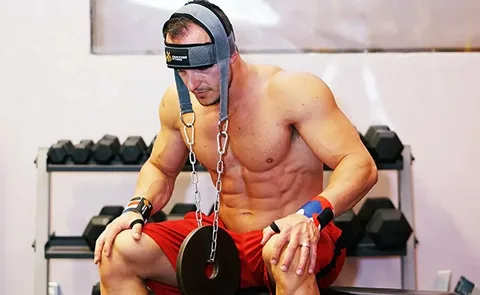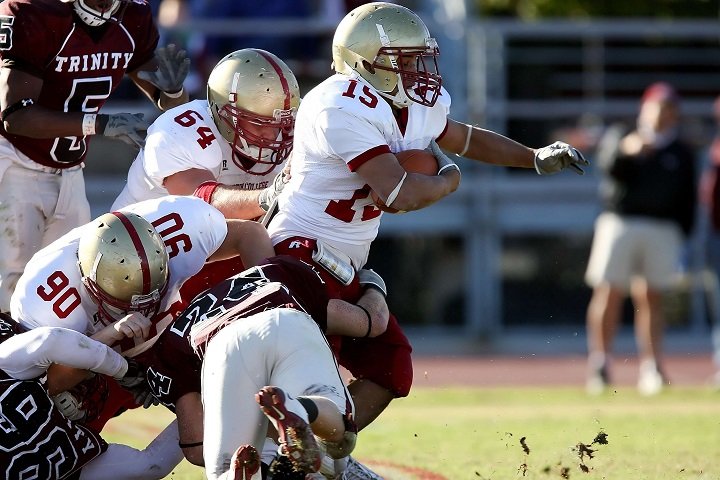Sports safety tips for preventing Football is an exciting, fast-paced sport that attracts millions of players and fans across the globe. However, with this thrill comes risk—particularly when it comes to concussions. Concussions are a form of traumatic brain injury (TBI) that can have serious long-term effects, making it crucial for players, coaches, and parents to take proactive measures to reduce the risk.
In this blog post, we’ll dive into essential sports safety tips for preventing concussions in football. Whether you’re a parent with a young football player, a coach working with a team, or an athlete yourself, understanding the risks and implementing safety measures can help keep players on the field, healthy, and injury-free. Let’s explore some effective strategies to minimize concussion risk.
Understanding Concussions in Football in Sports safety tips for preventing
Before we delve into prevention tips, it’s important to understand what concussions are and how they can occur in football. A concussion happens when the brain is jolted or shaken inside the skull due to a blow to the head or body. In football, this can happen during tackles, collisions, or even from hard hits to other parts of the body that cause the head to snap back or forth.
While concussions can sometimes be mild, they can also be dangerous. If not managed properly, concussions can lead to long-term cognitive impairments, memory loss, mood changes, and in severe cases, chronic traumatic encephalopathy (CTE)—a degenerative brain condition found in athletes who have suffered repeated head injuries.
1. Proper Equipment is Key
One of the first lines of defense against concussion in football is wearing the right protective equipment. While no equipment can entirely prevent concussions, properly fitted gear can reduce the severity of impacts.
Helmets
A helmet is a football player’s most important piece of equipment for head protection. However, it’s crucial to remember that helmets are designed to protect against skull fractures, not necessarily to prevent concussions. It’s essential to:
- Ensure proper fit: A helmet should be snug but not too tight, sitting about an inch above the eyebrows. There should be no gaps or looseness, and the chinstrap should hold the helmet firmly in place.
- Replace old helmets: Helmets lose their protective ability over time, so it’s important to replace any helmet that shows signs of wear or is over five years old.
- Choose high-quality helmets: Certain helmet brands are designed with concussion prevention in mind. While no helmet guarantees complete protection, brands like Riddell, Schutt, and Vicis are leading the way in creating helmets that better absorb impact.
Mouthguards
Mouthguards don’t prevent concussions directly, but they can reduce the risk of jaw injuries and tooth damage that could contribute to a head injury. A custom-fit mouthguard is preferred, as it fits more comfortably and provides better protection than a generic one.
Shoulder Pads and Other Gear
Properly fitting shoulder pads, gloves, and knee pads help reduce the risk of injuries that could lead to head impacts. Always make sure all gear is in good condition and correctly fitted to avoid unnecessary collisions.
2. Educate Players on Safe Playing Techniques of Sports safety tips for preventing
One of the most effective ways to reduce concussion risk is teaching players proper techniques for tackling and blocking. The majority of concussions in football occur during tackles, and teaching the right form can make a significant difference.
Head-Up Tackling
Players should be taught to keep their heads up and avoid leading with their helmets. “Spearing” (tackling with the crown of the helmet) is a dangerous technique that increases the risk of concussion and spinal injuries. Instead, players should focus on wrapping their arms around the ball carrier and driving with their legs, not their head.
Avoiding High-Risk Hits
Coaches should emphasize the importance of avoiding high-risk plays, such as leading with the head during contact. Instead, players should be taught to tackle using their shoulders and aim for the torso rather than the head.
Proper Form for Blocking
Blocking is another area where concussions can occur, especially when players use their heads to make contact. Coaches should train athletes to use proper stance and form, keeping the head out of the way and using the hands to engage the opponent, not the helmet.
3. Implement Concussion Protocols and Sideline Assessments Sports safety tips for preventing
One of the most important aspects of concussion prevention is ensuring that any potential head injuries are identified early and managed properly. Coaches and medical staff should be trained to recognize the signs of concussions, which can include:
- Headache
- Dizziness or confusion
- Nausea or vomiting
- Sensitivity to light or sound
- Loss of balance or coordination
If a player shows any signs of a concussion, they should be immediately removed from play and evaluated by a healthcare professional. The Concussion Recognition and Response (CRR) protocol recommends a “Return-to-Play” (RTP) progression where athletes must meet specific recovery milestones before returning to practice or games.
The Centers for Disease Control and Prevention (CDC) and other sports health organizations recommend that a player be cleared by a healthcare provider before returning to play after a suspected concussion. Players should also be educated on the importance of reporting symptoms and not returning to the field until fully cleared.
4. Limit Contact During Practice
While football is inherently a contact sport, coaches can reduce the risk of concussions by limiting full-contact drills during practice. Too much contact, especially in practices, increases the cumulative risk of brain injury.
Practice Guidelines for Safety
- Non-contact practices: Where possible, coaches should design drills that minimize contact and focus on skill-building, strategy, and conditioning.
- Limit full-contact sessions: If full-contact drills are necessary, they should be limited to just a few sessions per week and made as safe as possible.
- Use of dummies and pads: In place of live contact, use tackling dummies and padded equipment to simulate real-game situations without putting players at risk of head injury.
Studies have shown that limiting full-contact practices can significantly reduce the number of concussions and other injuries. In fact, many football leagues are adopting rules that limit full-contact practices during the season.
5. Promote a Stronger Neck and Coreof Sports safety tips for preventing

Research suggests that players with stronger necks are less likely to suffer a concussion. Strengthening the neck muscles helps stabilize the head during impacts, reducing the whiplash effect that can lead to a concussion.
Exercises for Neck Strength
- Neck bridges: Lying on your back, lift your hips and head off the ground to strengthen the neck muscles.
- Resistance band exercises: Using a resistance band, perform neck flexion, extension, and lateral movements to target different areas of the neck.
- Core exercises: A strong core improves overall stability and helps protect the spine during impacts. Incorporate exercises like planks, Russian twists, and leg raises into your workout routine.
6. Understand the Role of Rest and Recovery in Sports safety tips for preventing
Proper rest and recovery are critical when it comes to preventing concussions and ensuring athletes don’t suffer from long-term damage. Players should avoid playing through symptoms of a concussion, as this can worsen the injury. After a concussion, it’s essential to follow a medical professional’s guidelines and ensure sufficient rest before returning to the field.
The 5-step Return-to-Play (RTP) Protocol should be followed carefully, gradually reintroducing physical activity while monitoring symptoms. Returning too soon can increase the risk of further concussions, especially if the brain hasn’t fully healed.
7. Enforce Age-Appropriate Rules in Sports safety tips for preventing
In youth football, age-appropriate rules are essential for ensuring players’ safety. At younger levels, the emphasis should be on teaching proper techniques and reducing unnecessary risks.
Rule Modifications in Youth Football
- No tackling in certain age groups: Some leagues restrict tackling for younger age groups to protect developing brains. Instead, they focus on flag football and other non-contact formats.
- Limiting body weight: Some leagues require players to meet specific weight limits to reduce the force of impacts during tackles.
- Safe tackling drills: Focus on teaching safe, controlled tackles to avoid injury and promote proper form.
Conclusion :
A Team Effort for Concussion Prevention of Sports safety tips for preventing
Preventing concussions in football requires a combination of proper equipment, safe playing techniques, and effective protocols both on and off the field. It’s a team effort that involves players, coaches, parents, and healthcare professionals. By implementing the tips we’ve covered in this guide, we can help reduce the risk of concussions and ensure that the game remains as safe as possible for everyone involved










